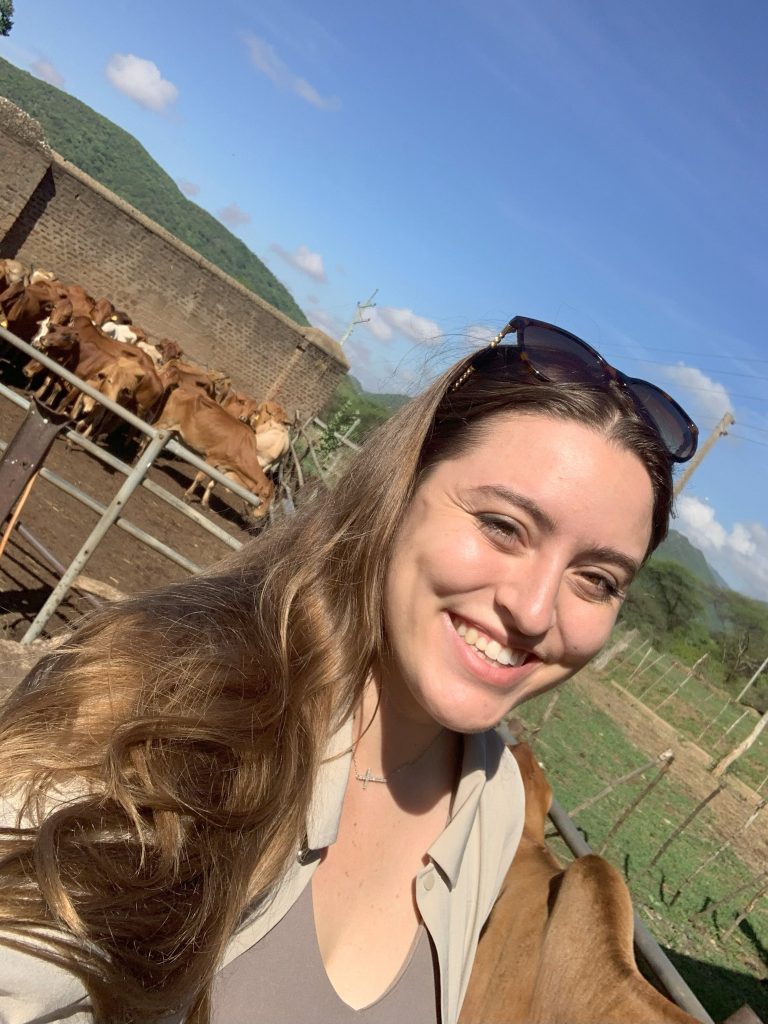
Hello!
My name is Beth Bangert. I am one of Dr. Wheeler’s graduate students working on the Tropical Adapted Livestock Pilot Project in Tanzania. For those of you who are unfamiliar with the project, we have produced embryos from Gyr (Bos indicus) x Jersey (Bos taurus) crosses, also known as Gyrsey, that we plan to transfer into indigenous recipient animals in Tanzania, Africa.
February 6th, 2024
Hello!
Recently I had the opportunity to connect with Nick Rackers, a Rotarian in Jefferson City, MO, and one of my group leaders from when I attended a Rotary Youth Leadership Academy as a high school student. The Rotary Club that Nick is a member of has also done work in Tanzania, so he invited me to speak to their group about our project.
The video below is a recording of my presentation. This presentation gives a brief overview of the background for this project, what we have accomplished so far, and what we plan to accomplish in the upcoming year.
Did watching this video spark any questions? Please reach out! I’d love to answer your questions or direct you to someone else who can. My email address is eb21@illinois.edu
The wheels are turning, and things are falling into place around the Wheeler Lab right now so be sure to check back soon!
December 17, 2023
Wow… What a trip it has been!
It is hard to believe that it has already been two weeks. From the moment we arrived, it has been a whirlwind of being immersed in new experiences. Over the last two weeks, I have visited two government farms, met with the Rotary Club of Arusha, attended a church service, and visited a school out in the bush amongst countless other things. Tanzania and its people have been more welcoming than I ever could’ve imagined. They love teaching their language and explaining their culture and they are very appreciative of any attempts you make to try and learn it. Their willingness to teach has made it incredibly easy to pick up on the language. I have learned a few words and phrases that I use fairly often. I have listed a few below!

Within the country though there are more languages spoken than just Swahili. Many of the tribes speak their own languages. Some will know Swahili as well, but many only speak the tribal language. All the children at the school we visited were Maasai and spoke mainly the tribal language. Few of them knew enough English or even Swahili to communicate with us very much, but we had so much fun together without even being able to communicate.
The geography is also completely different than what I pictured in my mind. It is much more mountainous. I also imagined it to be much drier, but because it is in the midst of the rainy season, we have seen rain almost multiple times daily resulting in a relatively green landscape. We also saw several cool species of wildlife! These include several vibrant birds, Maasai giraffes, zebras, and olive baboons.
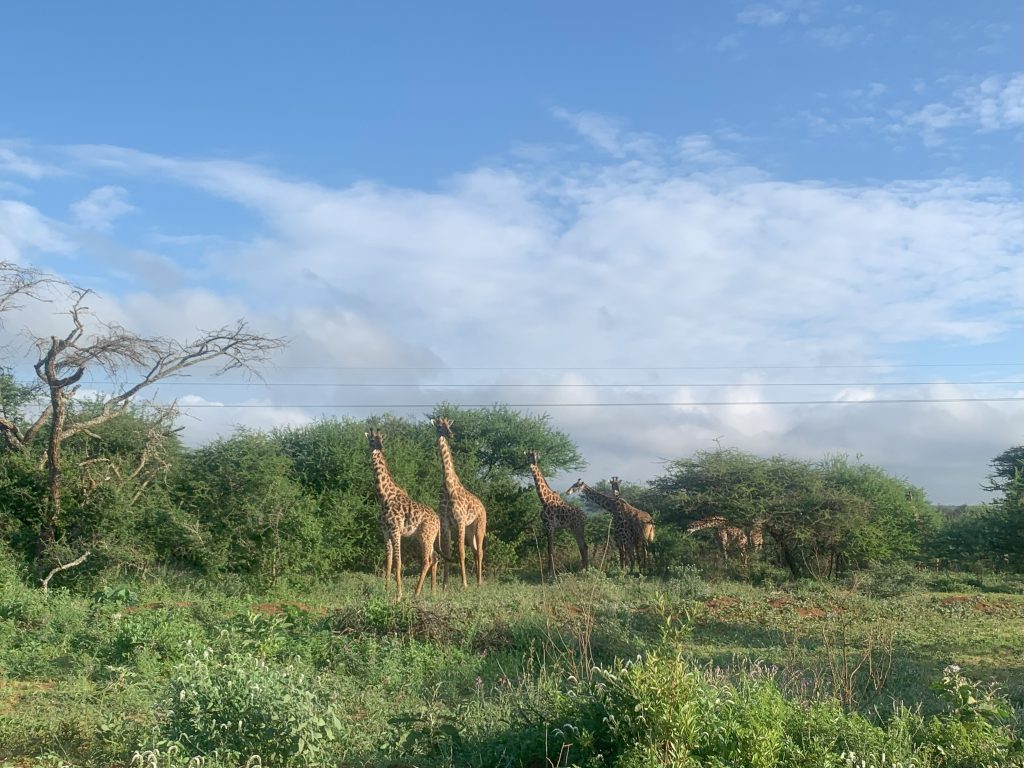
One of my favorite parts of the trip was seeing all the livestock. Every herd and every animal was unique. Each herd displayed a variety of horns, coat colors, and sizes. This is far different from what you see with most livestock operations in the United States.

So what comes next…
The next step for our project is planning the embryo transfers! Right now, we are figuring out dates and getting paperwork together. Everything is finally coming together with this. I know big things are coming soon, so stay tuned!
December 13, 2023
Jambo! (Hello!)
A little back story for today’s post….
Last May, I was awarded the Rotary District 6060 Ambassadorial Scholarship to assist with my expenses working on the tropical-adapted cattle project. As a part of the scholarship, I proposed that I would work with local Rotary clubs to teach improved animal management practices and assisted reproductive techniques. I reached out to Rotary International to get a contact for Rotary clubs in Tanzania but didn’t receive a response before leaving the United States.
Upon arriving in Arusha, I decided to look on Facebook to see if I could discover a Rotary presence in Tanzania. To my delight, I found a very active Facebook page “Rotary in Tanzania” whose posts led me to “Rotary Club of Arusha”. I sent them a message last week and received a prompt response requesting that I join them for their weekly meeting and give a short presentation about the project.
Back to today…
Before the Rotary meeting, Dr. Crystal Allen and I went for drinks at a cute café called Sanaa to meet Linda Baas (Rotary President) and Samantha Button (who manages the Rotary Facebook page) and talk about the trip and our project. After some discussion, we headed to the Rotary meeting at Peace Chinese restaurant. In my talk, I described the need that we are addressing, how we have manipulated our solution to fit the cultural preferences of the Maasai, and the timeline for the future of the project.
Rotary Collaboration
To finish my talk, I explained my proposal to collaborate with local Rotary clubs using my vocational knowledge to help fulfill the needs they see within the community and the vision they have as a club. Immediately, there was interest from the group as they proposed two options for possible collaboration when we return in March. One group at Patandi College in Tengeru has an animal husbandry option and suggested that I visit for a guest lecture on animal management or assisted reproductive techniques. Another group working at the John Paul II Rehab Centre in Monduli asked for advice about improving the productivity of their cows. I am working now to get in contact with the groups and discuss our collaborations further!
Rotary Club of Arusha Background
Rotary Club of Arusha is actually the oldest Rotary in Tanzania and has been a club since before Tanzania was even a country. Their club membership is quite diverse in age, nationality, and vocation. Arusha itself is home to 5 or 6 different Rotary clubs, but the Rotary Club of Arusha is one of the most active.
Overall, our visit with Samantha, Linda, and the rest of the Arusha Rotarians was amazing. It was a thoroughly enjoyable experience. They have invited me back to give them updates on our project when we return in March, and I can’t wait to discuss our progress!
December 11, 2023
Karibu! (Welcome)
After a few days’ rest, we traveled to West Kilimanjaro to evaluate the second TALIRI ranch. We hoped to find circumstances similar to those at TALIRI Mpwapwa. Unfortunately, this was not the case.
Tanzania Livestock Research Institute at West Kilimanjaro
The TALIRI ranch at West Kilimanjaro houses the gene bank for goats. There was much ongoing research regarding small ruminants at this site, and the facilities seemed to be geared toward these efforts. Cattle are a relatively new introduction to this ranch.
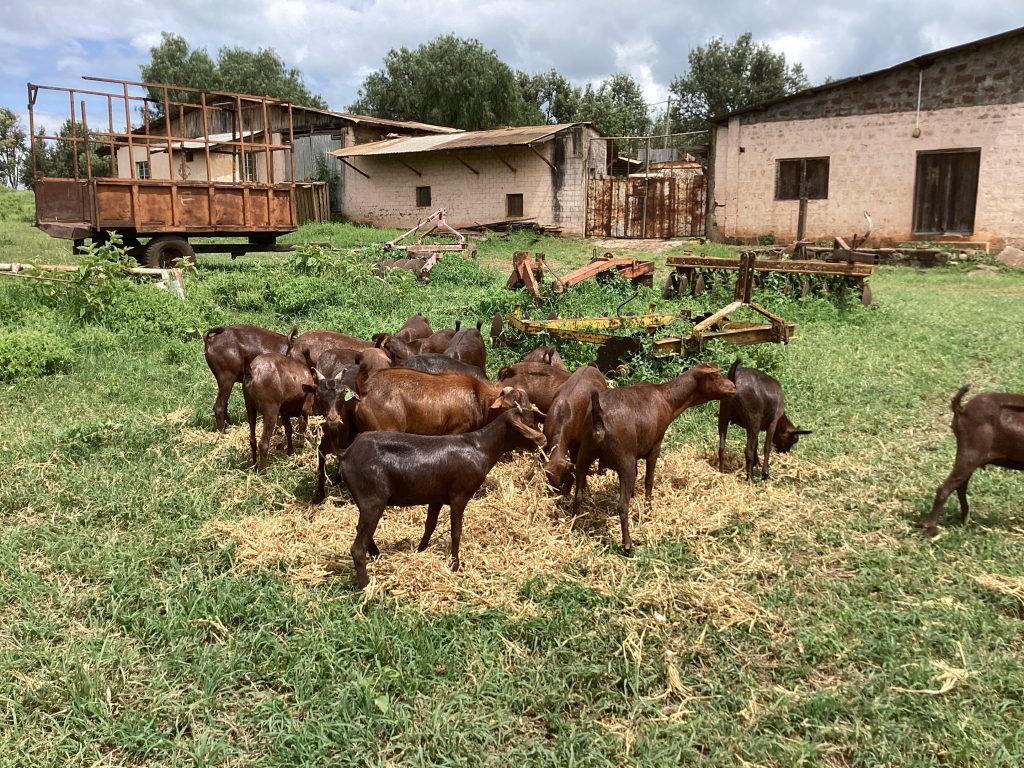
Facilities
TALIRI West Kilimanjaro appeared to boast more readily accessible pasture and hay storage than that of its sister station in Mpwapwa. Though forages were more adequate, the facilities were inferior to those we saw at Mpwapwa. There was no head catch (modern or primitive) on-site, and the setup of the holding pen made moving cattle tedious at times. The alleyway where we worked the cattle was covered, but with little overhang. No table nor writing space was available, so individuals keeping records were forced to stand. The majority of the facilities onsite are intended to be used for goats.
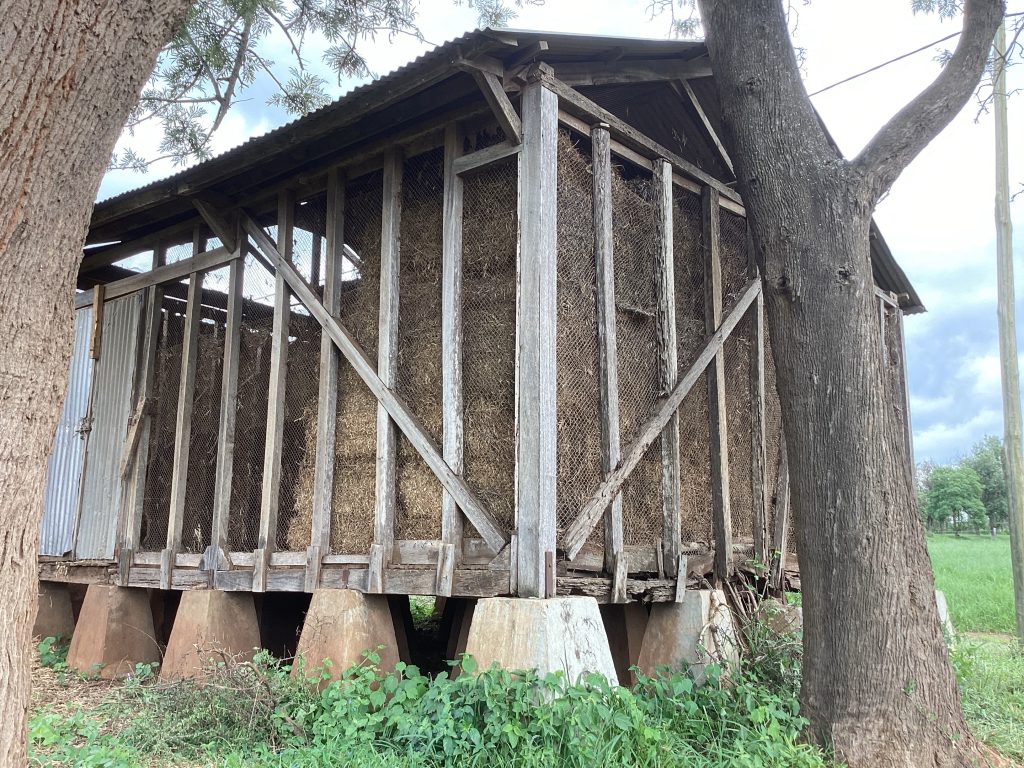
Ranch Records and Standard Operating Procedures
This ranch uses its cattle solely for meat production. Therefore, there are no current nor past records of milk production. In addition, they have no defined breeding season (allowing the bulls to run with the females year-round) thus there is never a uniform group of calves, nor a large group of cows open at the same time. This poses some difficulty when planning a research project.
Recipient Evaluation
Upon our arrival, we were informed that many of the animals they had intended to use for the project were pregnant. When castrating last year’s bull calves, they were not entirely successful. Because calves were allowed to continue to run with the cows after castration, the calves that retained a testicle had the opportunity to breed the open cows. The majority of cows found to be open when we performed our evaluations (transrectal palpation and ultrasound), had an exceptionally low body condition score (BCS) making them unfit for synchronization and, likewise, embryo transfer. Many of the open females with adequate BCS were also found to have fresh calves at their sides. In total, we evaluated 33 animals and found 14 to be open.
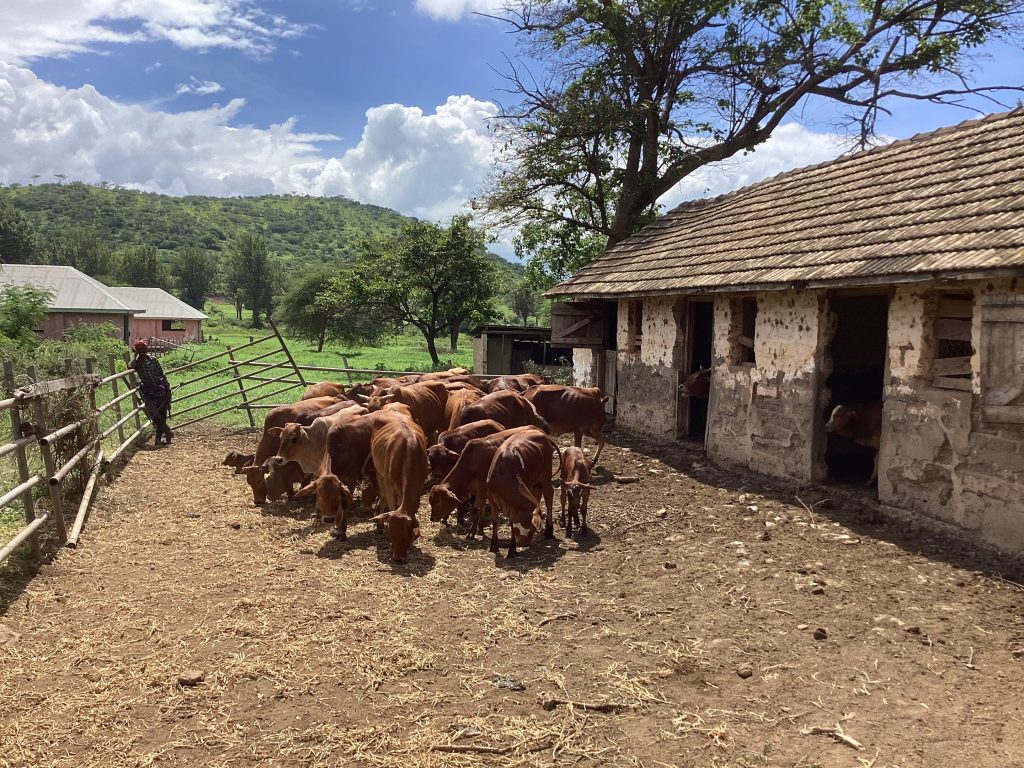
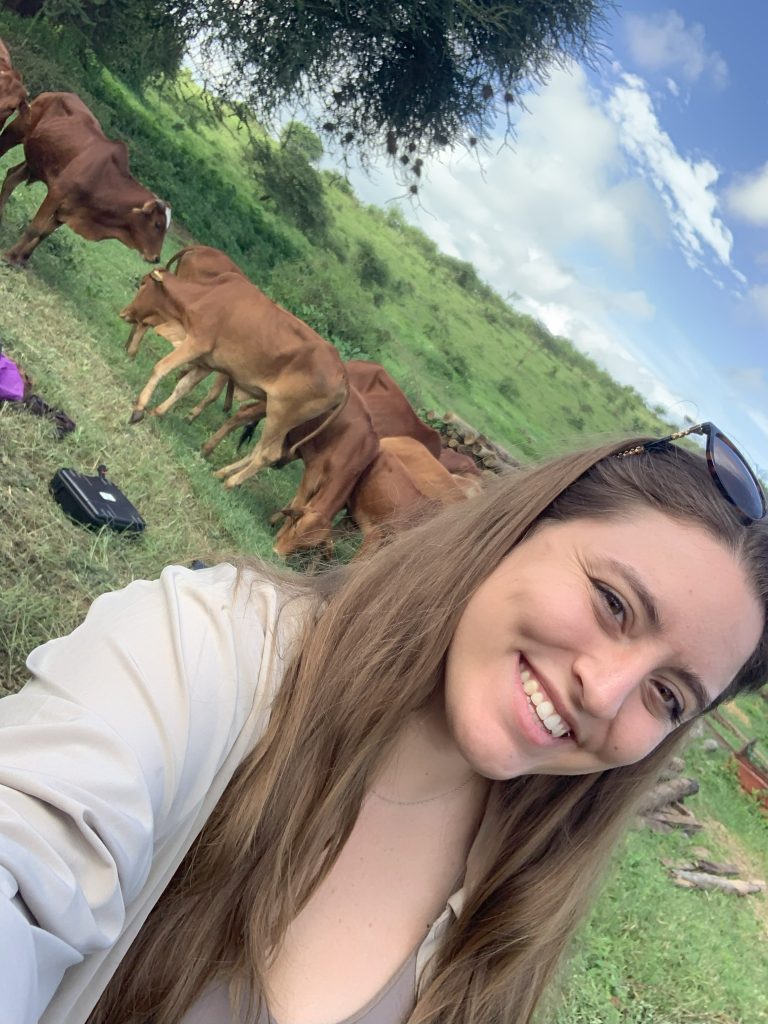
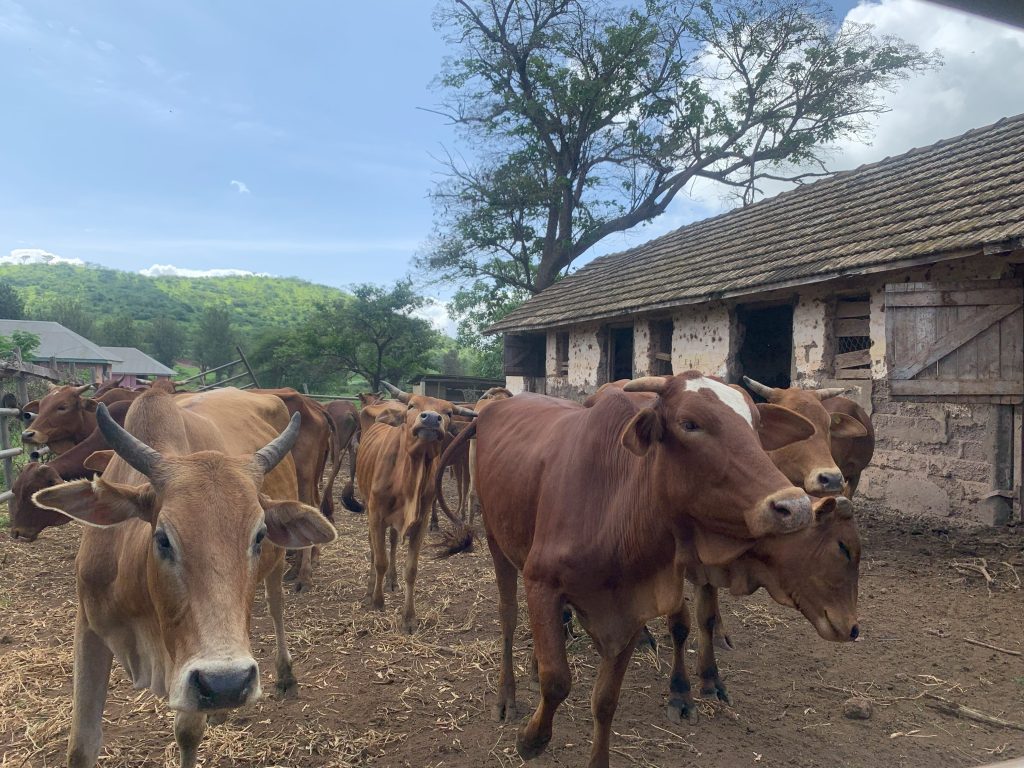
CIDR Training
After completing the evaluation of the recipient herd, I worked with a few members of the team, instructing them on the proper handling practices and techniques to insert and remove a controlled internal drug release device (CIDR), used to synchronize estrus cycles. The device is inserted transvaginally and releases progesterone until it is removed. To learn more about inserting a CIDR, click the link below for a helpful video!
Click here to see a video about CIDR application!
We did a short review of the insertion process at TALIRI Mpwapwa as well, but the majority (if not all) of the workers there were more than familiar with the device as they have used it to synchronize cattle for artificial insemination. We do differ in methods from traditional CIDR application slightly in that we trim the cord used to remove the CIDR to approximately 6 inches before the CIDR is inserted. We have requested this alteration because in his work, Dr. Wheeler has found Bos indicus cattle tend to be more curious than Bos taurus. Therefore, when the cord on the CIDR is long, the cattle will tend to grasp at them and occasionally pull them out on their own.
At the end of the day, we completed the evaluation of the entire prospective recipient herd. However, with low numbers of viable recipients and no milk production data, it does not look hopeful that this TALIRI ranch will be included in the first round of this project. We spoke with the manager and encouraged him to begin keeping more detailed records so hopefully, we can include this site in the project at a later date.
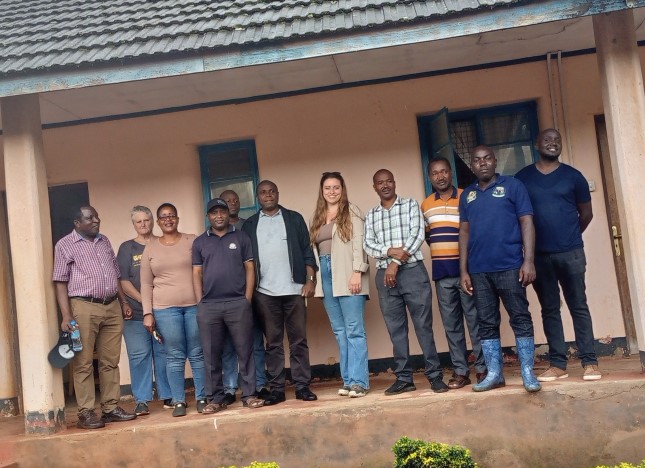
December 7, 2023
Hello from Africa!
We arrived at the Kilimanjaro International Airport safely on Monday night and headed to Arusha, where we are staying for most of the trip. On Tuesday, we settled in and did some housekeeping (exchanging currency, etc.). Then on Wednesday, began our long haul to Mpwapwa, the location of the first Tanzania Livestock Research Institution (TALIRI) ranch we are evaluating. The countryside we drove through is beautiful. We saw a wide variety of geographical features; some areas quite mountainous, others flatter, and some with a high volume of volcanic rock. It was interesting to see how the agricultural practices changed when moving through these various regions. The plains areas had larger herds of goats, sheep, and cattle being led by pastoralists. Whereas the mountainous areas had less livestock and more banana farms. They utilized all the land they possibly could. Even on the very steep mountainside areas, they implemented terraces to be able to plant crops. The body condition score of the cattle I saw as we drove varied quite a bit, so I wasn’t sure what to expect when we arrived at the ranch.
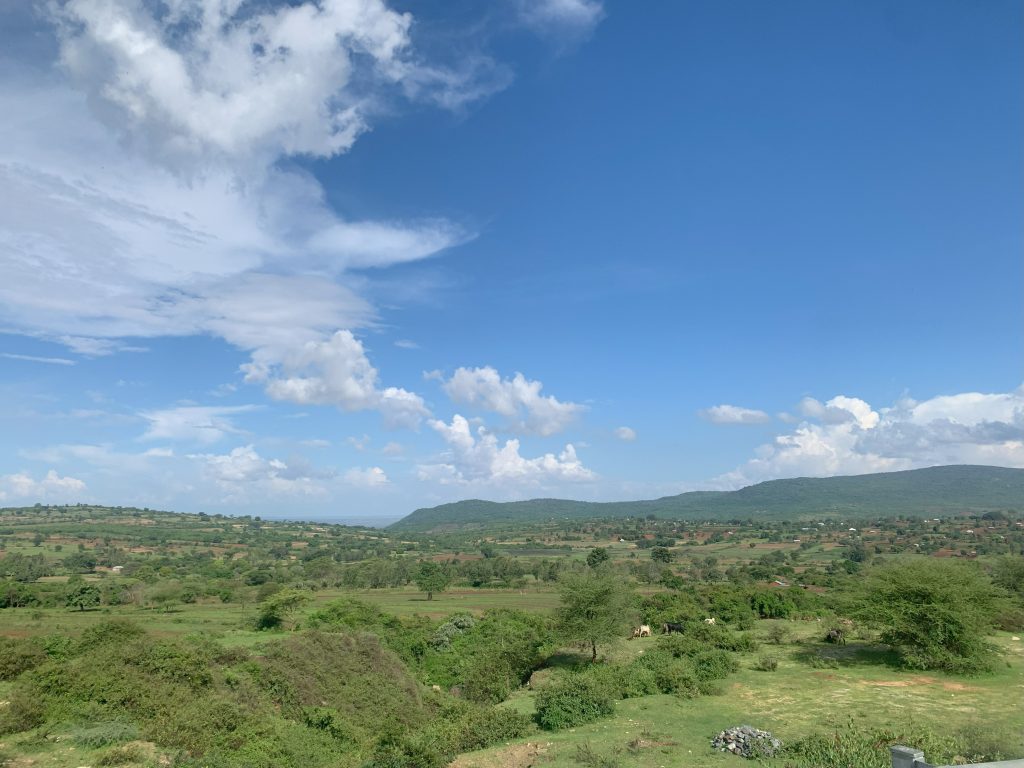
We were met in Dodoma (the capital city) by Dr. Andrew Chota, the Director General of TALIRI, who led us the rest of the way to Mpwapawa. It was quite late when we arrived, so we headed to bed shortly after to prepare for the big day we had ahead of us.
Tanzania Livestock Research Institute at Mpwapwa
The next day we headed out early to begin evaluating the livestock. We drove past other parts of the TALIRI ranch on our way to the livestock handling facilities. These included training facilities, crop fields (corn, tomatoes, and more), a pasture gene bank (plots where they have collected and isolated numerous pasture species both native and non-native), a primary school, the first cattle dip in East Africa (built in 1905) and more.
Facilities
Upon arrival, we found the facilities to be basic, but more than adequate for the job. The facilities included a wooden head catch covered by a roof, a small alley dug into the ground with a concrete bottom, and a holding pen. There was another roofed area to the side of the alley that could be used to set up equipment. They also brought out a table and chairs, so that the people keeping records had a good place to do so.
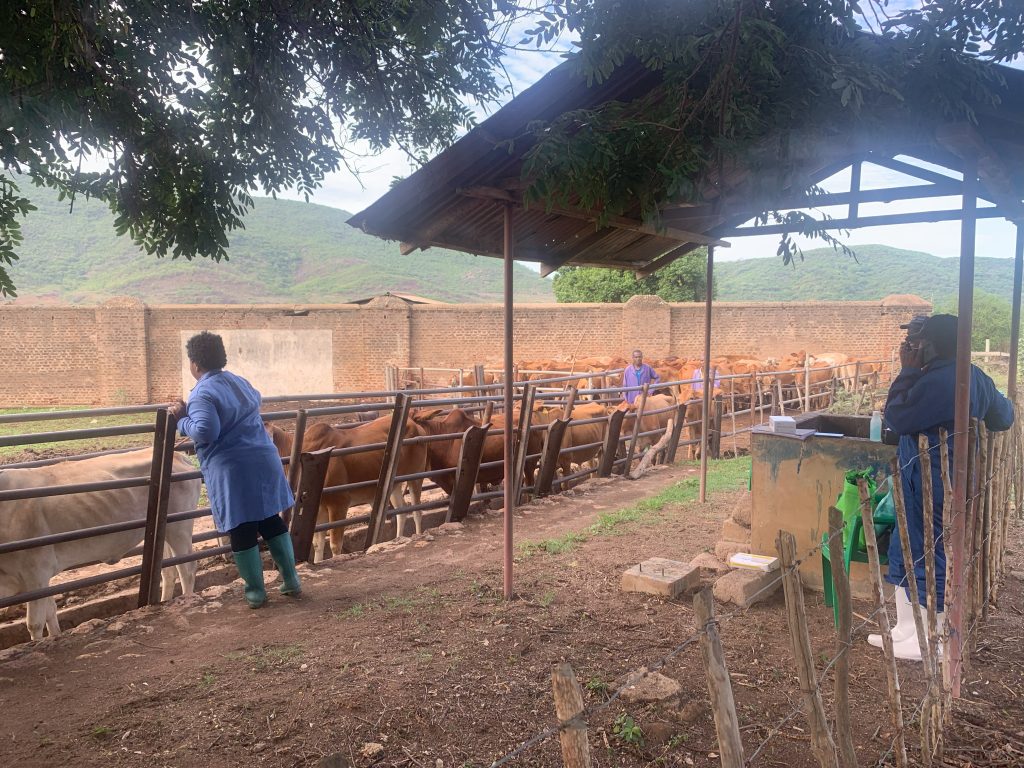
There was no electricity available on-site where we evaluated the animals, but we were later shown another handling facility. This facility was located within the campus and research facilities. It boasts a beautiful new Animal Biotechnology Research Center equipped with electricity, a cold room, and much of the equipment needed to perform assisted reproductive techniques. The center is mere feet away from the handling facility, which is again covered, and this time includes a metal head catch. I believe this setup will be perfect for our project. We also learned they have the means to produce liquid nitrogen onsite. This would ensure that any embryos we bring, but do not have recipients for could be saved here for transfer at a later date.
Ranch Records and Standard Operating Procedures
This brings me to the records kept by the ranch. Again, I was very impressed. They have two recorded tag numbers for each animal, birth date, birth weight, breed composition, daily milk production, and more. Their records will supplement ours excellently. TALIRI implements two distinct breeding seasons, March-May and September-November. To ensure no breeding happens outside of this window, the bulls are moved some distance down the road, into pens near their previously mentioned campus and research facilities. After birth, calves are weaned at approximately 3 months of age (early than I had expected). Animals are vaccinated yearly for the following:
- Anthrax and Black Leg
- Foot and Mouth Disease (FMD)
- Contagious bovine pleuropneumonia (CBPP)
In addition, they are dewormed using a drench and run through the dip every week for tick control. Tick infestations increase during the rainy season, so this may increase to twice a week depending on the infestation level.
Hay is stored for supplemental feeding, collected from the fields of local farmers who receive TALIRI assistance for field improvement. The assistance may be weed removal or the establishment of new or improved forage species. The animals walk many miles a day looking for forage, especially during the dry season when pasture is scarce. As they enter the rainy season, the pasture improves and less supplementation is needed.
Recipient Evaluation
We began our evaluation with a group of about 56 animals. The animals have been separated from the bull since August of 2022. Their body condition scores ranged from 2-4, but as the region enters its rainy season, these scores are expected to increase as pastures improve.
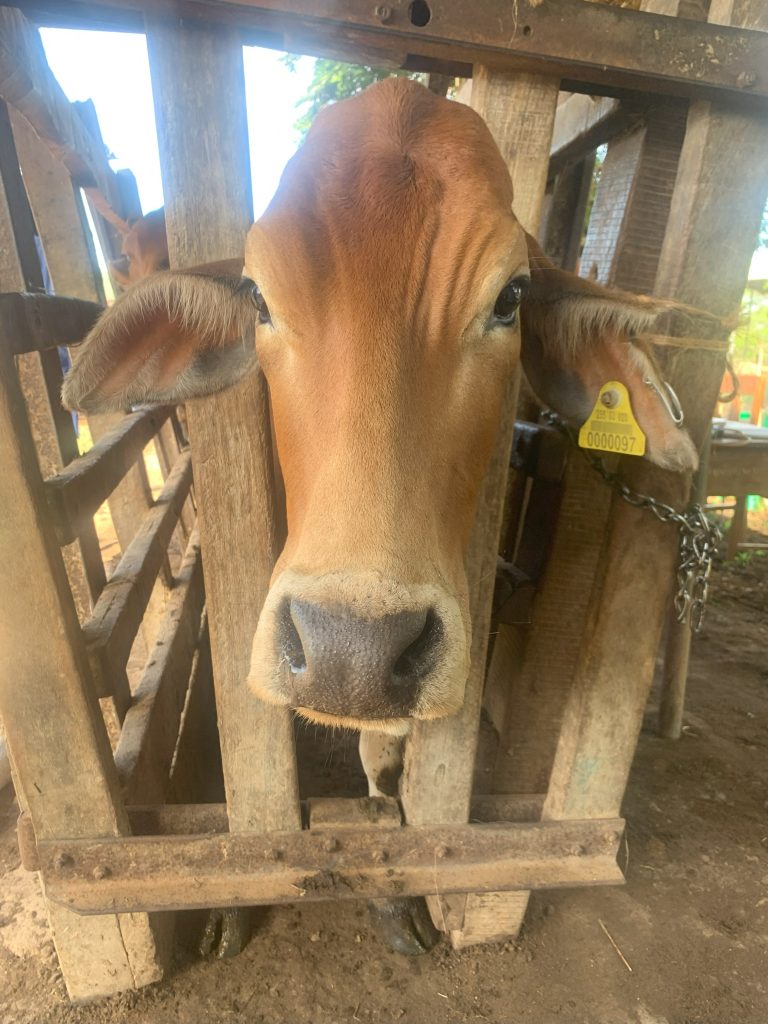
There is an assortment of breeds within the group including the following:
- Mpwapwa
- Boran
- Sahiwal
- Danish Red
The majority of the cattle were crossbred to increase heterosis and hybrid vigor. The Danish Red or Red Dane is a Bos Taurus breed brought in for the crossbreeding programs. There are no pure-bred Red Danes because they would not be able to withstand the environment.
Drs. Isaac Kashoma, Andrew Chota, and Mwenezi Kabululu rectally palpated each potential recipient to confirm normal anatomy and cyclicity. Aloyce Bunyaga, a student of Dr. Kashoma who is currently finishing a degree program in New Zealand, performed an ultrasound on each animal to confirm pregnancy status. Of the first group, 49 animals (87.5%) were found to be potential recipients for the project.
Expectations were to have approximately 75-80 animals identified as potential embryo transfer recipients, so we took lunch while the farm workers brought in another group of cattle that had been grazing. This group had a significantly higher percentage of cows that were already pregnant, but we were able to find 18 animals that were viable, bringing the total prospective recipients to 67.
Overall, the site evaluation of TALIRI Mpwapwa was a huge success. On Monday we will travel to TALIRI West Kilimanjaro and we are hopeful to be equally as successful there!
December 4, 2023
Hello!
My name is Beth Bangert. I am one of Dr. Wheeler’s graduate students working on the Tropical Adapted Livestock Pilot Project in Tanzania. For those of you who are unfamiliar with the project, we have produced embryos from Gyr (Bos indicus) x Jersey (Bos taurus) crosses, also known as Gyrsey, that we plan to transfer into indigenous recipient animals.
Click here to see a video of the oocyte aspiration!
Why did we choose this cross and what are the benefits of developing this breed in Tanzania?
We chose the Gyrsey for Tanzania for a variety of reasons. One being that a similar cross, the Gyr x Holstein cross (also known as the Girolando) has already had a large success in tropical countries like Brazil. Currently, the average milk production from indigenous cattle in Tanzania ranges from 0.5-1 Liter per day. The average milk production from a Girolando per day easily overtakes that of the indigenous breeds. Thus, we know a similar cross should show an increase in total milk production as well, but the total production will be heavily influenced by the amount of available nutrition. We chose to incorporate Jersey genetics over Holstein for a few reasons. First, the lighter red-brown color of the Jersey is culturally preferable to the black of the Holstein. Second, Jerseys have a high butterfat percentage (approximately 5%) which is good for producing culturally desirable food products such as ghee. Overall, in Tanzania, cattle (both dairy and beef) productivity is low due to poor genetic quality of livestock, poor animal nutrition, poor veterinary services, and poor marketing systems for milk and meat. This results in high losses of milk and high urban prices. Interventions to increase dairy productivity could have a major impact on rural poverty by raising incomes and on urban poverty and malnutrition by reducing the costs of highly nutritious, culturally desirable foods.
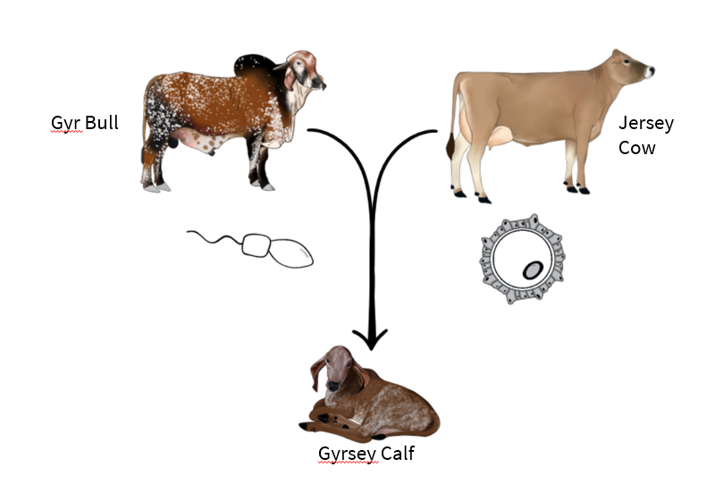
So… What are we doing now?
Now Dr. Crystal Allen and I are headed to Tanzania to evaluate the facilities available on two government ranches (the Tanzania Livestock Research Institute of Mpwapwa and the Tanzania Livestock Research Institute of West Kilimanjaro). In our evaluations, we are looking for the following things:
- Is there electricity available?
- What kind of cattle working facilities are available? (chutes, sorting pens, head catches, etc.)
- Are these facilities covered or shaded?
- Is there any bench space available to set up equipment such as microscopes and thawing units?
- Is this space indoor or outdoor?
As well as evaluating the facilities, we will be working with Dr. Isaac Kashoma and his students from Sokoine University of Agriculture to evaluate the animals and determine which are the best potential recipients for embryo transfer when we return in March. Because the cows run with the bulls year-round, there is no defined breeding season. We will perform transrectal palpation to determine if the animals are pregnant. Pregnancy will immediately disqualify cows as potential recipients. If the animal is determined to be open, then further palpation will determine the animal’s tract score. We also plan to age prospective recipients (via teeth) and record their current Body Condition Score (BCS).
We aren’t sure what records to expect the ranches to have kept, but are hopeful to use their records to add other criteria such as number of calves, parentage, date of birth, and date of last calving to our data. Any records they have will be a beneficial addition to the information we plan to gather determining which animals will be the best recipients. Once we have chosen which cows to use as potential recipients, we will sort them off and have them kept separate from the bulls so they will still be open when we return to do the embryo transfers.
We are currently somewhere over the Atlantic Ocean. When we land, I can’t wait to provide you with more updates on the progression of our trip! Stay tuned😊

